|
Christian
Media
Communiqué
THE MATTER OF THE MINGLING
Part VII

The book of Acts documents the ongoing effort to mingle the seed of men – which would have to include those who rejected the Spirit of God, and sought to mingle their supposed Flesh and Blood standing as earthly Jews – with the sons of God who were born again in Jesus Christ.
"They that are in the flesh cannot please God. But ye are not in the flesh, but in the Spirit, if so be that the Spirit of God dwell in you. Neither, because they are the seed of Abraham, are they all children…That is, they which are the children of the flesh, these are not the children of God" (Romans 8:9; 9:7, 8).
Predictably, as the Jews had enjoyed the status of chosen by God for centuries, when the LORD turned everything upside down, and redefined Israel as those who are born again in the Spirit through the unmerited favor found in the New Covenant, the Jewish leaders quickly understood the Gospel threatened their very existence as the chosen people. The former Pharisee, Saul of Tarsus (later renamed Paul), was the learned man elected by God to explain how circumcision (which was the physical sign of being chosen by God) was now worth nothing, because anyone could enter in to fellowship with God through Christ's sacrifice for sins. As a result of this pivotal role, the Apostle Paul was the target of a unique hostility focused on him by the Christ rejecting Jews.
"There lie in wait for him of them more that forty men, which have bound themselves with an oath, that they will neither eat nor drink till they have killed him" (Acts 23:21).
Once the door of salvation was opened to the Gentiles, Christianity spread like wildfire. Further, as the Gentiles were far more in number than the Jews, it quickly became apparent the Jewish power would be unable to stop it. Simultaneously, many educated Jewish priests found the story of JESUS appealing – and the largest defections from the priesthood came from the Pharisees. This was because their partners in the ruling council known as the Sanhedrin -- the sect of the Sadducees -- never believed in Spiritual things such as angels, or even the resurrection.
"For the Sadducees say that there is no resurrection, neither angel, nor spirits: but the Pharisees confess both" (Acts 23:8).
In previous written efforts, we've shown the drive to actually murder the Christians in the early days largely arose from the Sadducees, as evidenced by the affinity of the chief priest who is identified in the book of Acts of the Apostles. When Saul of Tarsus became radicalized and determined to prosecute the Christians to the death, he broke with His mentor Gamaliel the Pharisee (who urged restraint), and instead went to the chief Sadduccee for authority to destroy the believers.
"And I persecuted this way unto the death [and] made havock of the church, entering into every house, and haling men and women committed them to prison" (Acts 22:4; 8:3).
After Saul is confronted by the LORD (and becomes the Christian leader known as Paul) on the Damascus road (Acts 9:3), he spreads the Gospel to the Gentiles in accord with the leading of the Holy Spirit. In this extreme role reversal, he moves from the chief opponent of the Gospel, to its foremost advocate. Subsequently, it becomes evident the LORD brought Paul into the Kingdom to oppose the many Pharisees who had half-heartedly come to Christ, even as they attempted to mingle the Gospel of Jesus Christ with the faith of the Pharisees.
"But there rose up certain of the sect of the Pharisees which believed, saying, That it was needful to circumcise [the Gentile believers] and to command them to keep the law of Moses…therefore Paul and Barnabus had no small dissension and disputation with them" (Acts 15:5, 2).
The attempt to mingle the Old Testament requirements for salvation, with the Spiritual freedom inherent in the New Testament, is part of an on ongoing effort to leaven the Gospel – and it is a process that has occurred over and over again for the last two millennia. Further, the corrosive effort to mingle the Spirit found in the regenerated sons of God with the flesh and blood standing found in the seed of men, has taken many different forms over the years. This is why the prediction in Daniel is open ended, in that it addresses the Spiritual impulse which consistently seeks to blend the Spirit of God in redeemed men and women, with the spirit found in flesh and blood – the seed of men – and this process has been Sequentially Recapitulated for the last two thousand years.
"And whereas thou sawest iron mixed with miry clay, [the double minded] shall mingle themselves with the seed of men: but they shall not cleave one to another, even as iron is not mixed with clay" (Daniel 2:43).
Thus, the collision between the Spirit found in the Sons of God – in the previous example the Holy Ghost who led Paul, Barnabas, Peter, and the others – against the Jerusalem based Pharisaical believers who sought to steer the Gospel to a place where their flesh and blood based authority would be increased, is not a genetically driven Jewish versus Gentile equation. In fact, at least some of the Pharisees which sought to impose the restrictions of the letter of the law on the Gentiles (through conformity to circumcision) were likely renewed through the Holy Spirit moving in Paul's opposition to their error ridden efforts.
This means the attempt at mingling the Spirit of God with the spirit found in "the seed of men" may be found in various vessels throughout the age. The example of the Jewish legalizers occurred early on because the Gospel was delivered "to the Jew first, and also to the Gentile" (Romans 2:10).
After the vehement rejection of the Gospel by "the spirit that now worketh in the children of disobedience" (Ephesians 2:2), and the wholesale destruction of those "children" (a subtle reference to the Jews who rejected Christ up to 70 AD), the mingling shifted to Gentile vessels.
As the Roman Empire continued its slow decline due to the influence of the Fallen Ones manifested in heathen religious traditions, the Spirit of God invaded the dark domain of the devils, and the collision between Life and Death continued. For instance, when Paul brings the Gospel to Ephesus, he is opposed by Gentiles who conducted a lucrative trade in the manufacture of idols of the goddess Diana. The Scriptural text is rich in detail for, because of the craftsmen who generated wealth and political influence through the temple of Diana, we learn that this Gentile religion was prevalent throughout the entire continent of Asia. We also learn that Christianity was overtaking the idolatrous religion of the goddess.
"Our craft is in danger to be set at nought; but also that the temple of the great goddess Diana should be despised, and her magnificence should be destroyed, whom all Asia and the world worshippeth…Moreover ye see and hear, that not alone at Ephesus, but almost throughout all Asia, this Paul hath persuaded and turned away much people, saying that they be no gods, which are made with hands" (Acts 19:27, 26).
As the Hellenized Roman society grappled with the rapidly growing faith, and the Gospel spread across Asia and into Europe, the Jewish opposition diminished due to a lack of the political power they once enjoyed. Gradually, the doctrinal development in early Christian assemblies absorbed elements found in ancient heathen religion – and the mingling continued. For example, when Paul and Barnabas preached in the Greek region of Lycaonia, they performed a miraculous healing of a cripple – and even though the disciples explained the Gospel, the people were so impressed the priest of the planetary religion of Jupiter sought to sacrifice to them as angels.
"And they called Barnabas, Jupiter; and Paul, Mercurius…Then the priest of Jupiter…would have done sacrifice with the people" (Acts 14:12, 13).
In 312 AD, the Roman emperor Constantine, recognizing the power of the Gospel over men's lives, claimed a Christian conversion, and sought to use Christianity to grow his military power. As membership in the church became socially acceptable, the priesthood became a viable career option. Religious leaders, seeking to expand the faith, imported various characteristics from the star god religions of the Greeks, Persians, and Romans. They saw how the heathen religions particularly adored female deities, so in a tactic which is reminiscent of a modern brand management campaign, the elevation of Mary was undertaken. Eventually, even statues of the Egyptian mother goddess known as Isis (nurturing her supposedly divine son Horus), were simply renamed Mary and Jesus.
As the idols of the goddess Diana had long since disappeared, the huge religious movement "Christianized" the use of idols – instead calling them icons. Roman art legitimatized the idolatry by repositioning the statues as saints. Ancient Hindu prayer beads became rosary beads, infants who were in no position to choose to be baptized were "sprinkled" (in an abominable procedure that could be dubbed baptism lite), and the apostasy galloped across the centuries. Even the ancient practice of cutting down an evergreen tree to commemorate the death of the Babylonian sun god Tammuz (coinciding with the winter solstice), was imported as a ritual celebrating the birth of Christ. By the 17th century AD, the practice of importing rival traditions had become so common an English word for this process – syncretism – was coined, and applied to the church. More accurately, the King James Bible has always used the word mingled.
The Roman Catholic Church ruled behind the thrones of European royalty for centuries, even providing the religious figure who performed the coronation of their kings. After the Romans, Catholic Spain sought out the new world, seeking to expand the dominion of the church in the new world; but many devout Europeans had become disgusted with the brazen political ambitions of the Romanists, and the resulting protesters – called Protestants, eventually acquired power in England. The British king Henry VIII, futilely seeking a male heir from his infertile Spanish Catholic wife, broke with Rome because the Pope would not annul his marriage so he could remarry a Protestant who promised him a son.
Ironically, the king was willing to upset centuries of religious tradition in a tawdry effort to produce a son – and his desire to reproduce via the "seed of men" – was the primary motivation for English independence from the papacy. In the absence of a male heir, Henry's daughter Elizabeth I rallied the political power of England through opposition to the invasion of England by the Spanish Armada, which sought to return England to the sway of the Catholic Church – and Protestant England rose to power through the huge naval victory.
"Four great beasts came up from the sea…the first was like a lion, and had eagle's wings" (Daniel 7:3, 4).
After Queen Elizabeth's rein, many devout British Christians brought about a movement called the Fifth Monarchy which – focusing on the very passages we're probing in Daniel 2 which speak of the arrival of the Kingdom of God – erroneously asserted that England was to follow the Babylonian, Persian, Grecian, and Roman monarchies with a Fifth Monarchy manifesting the LORD's reign. These 17th century Christians sought to mingle political power with their Spiritual zeal, in order to inaugurate what they believed was the soon to arrive flesh and blood version of the Kingdom of God. In the ensuing political turmoil, thousands lost their lives.
Once the colonial period had matured, the crown of Russia became the first state to adopt the communist system developed by Karl Marx – a German Jew who was descended from a long line of Jewish rabbis. Baptized a Lutheran at the age of 6, Marx came to believe that embracing the "the seed of men" and human government as "God," would solve man's problems. His heretical teachings mark him as the architect of one of the most destructive systems of all time.
"And behold another beast, a second, like to a bear, and it raised up itself on [the left] side, and it had three ribs in the mouth of it between the teeth of it: and they said thus unto it, Arise, devour much flesh" (Daniel 7:5).
The Marxists sought to spread communism to Germany, but the backlash morphed into a nationalism which embraced religion instead of replacing it with government. The resulting Third Reich of Germany featured a twisted version of the cross, heavily leavened with political theory ("the seed of men"), and this unholy mixture resulted in a malevolent militarism that devastated the lives of tens of millions. One analyst of the unprecedented mingling of Christianity with the ways of human government wrote "Seduced by the Satanic majesty of The Fuhrer, church leaders throughout Germany allowed the Swastika a prominent place alongside the Christian cross in their sanctuaries" (Hitler's Cross, Irwin W Lutzer).
"After this I beheld, and lo another, like a leopard…the beast also had four heads; and dominion was given to it" (Daniel 7:6).
After the four generals of the Allies closed in on the Nazis, and occupied Germany at the close of World War II (manifesting the four heads under the quadripartite agreement), the "dreadful and terrible" (Daniel 7:7) English speaking American beast rose to global power. As the post war USA embraced the mingled worldview of the Marxists through the absorption of Communist educators in the public school system via the so-called Frankfort School intellectuals, America simultaneously imported the mingled worldview of the Nazis into the intelligence community under a CIA program called Project Paperclip.
"And the beast which I saw was like unto a leopard [Germany], and his feet were as the feet of a bear [Russia], and his mouth as the mouth of a lion [England]."
As World War II and the fascist holocaust fueled the drive for ethnic Jews to return to their ancient homeland, "Christian" America was the first world power to recognize the new state of Israel – a nation founded on human endeavor by "the seed of men" in 1948 – even as what was left of the battered and bruised Spiritual body of Christ sought to mingle themselves with the seed of men – the Christ rejecting state of Israel.
-- James Lloyd
To Be Continued
___________________________________________________
Christian Media also has a regularly issued companion letter commenting on the material seen in THE MATTER OF THE MINGLING Part VII, as well as other current topics related to Bible Prophecy. The latest edition of that letter (labeled the Ministry Status Report) which goes to everyone who has requested our materials, has even more prophetic information concerning issues of importance to our generation.
Incredibly, we've already proven that "Christian" parties have actually hired hackers to take down our websites. Thus, we desire to weed out those tares who are insincere about further examinations of the truth of the Gospel, so we send the links to our Internet materials via surface mail.
As we move through the wilderness of this world, even our Internet domains have been blacklisted by the dark powers, so we urge all those who hear the voice of the LORD in these Communiques to seek the LORD while He may yet be found. As those who have inherited the light of God through Christ's marvelous work,
"[We] must work the works of him that sent [us], while it is day: the night cometh, when no man can work" (John 9:4).
To get our current Internet links, and receive full access to Christian Media materials, simply send your name and postal mailing address via email to Notify@giveusmessage.info, and we'll surface mail you the links to the multiple websites Christian Media operates -- which freely host extensive written prophetic material, multiple radio shows, underground news, and the video related to the above prophecy article.
___________________________________________________
If You're Energized By What You've Read In The Above Prophecy Article, Welcome To The World Of Christian Media!
Christian Media
PO Box 1414
Medford OR 97501
541/899/8888
|

Charlie

Great and Marvelous

Stealth Dispensationalism

Gene Autry-Doja Cat

The Baal Bible

The Revolutionary Role Reversal

Ten Kings

Image Of The Beast

Something

Deadly Wound

You're In The Army Now

The Remnant Of Israel

Kingdom Within You

Jesus IS

New Heart From Heaven

Rivers Of Babylon

One Night Town

Centuries

Whore Of Babylon

Crazy

Get Away

Turn Up The Radio

I Hear You Knocking

Circle Of Friends
|
|
Click here to make CMTV your
homepage
Christian Media Network Catalog
Also from James Lloyd
|
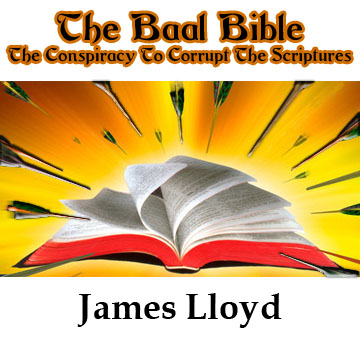
The Baal Bible DVD
James Lloyd summarizes the role of the heathen "scriptures" from Mesopotamia, which the scholars are using to leaven the genuine Word of God. In what he has dubbed the "Baal Bible," these Gentile writings speak of the Creation, the Garden episode, and the Great Flood, even as they glorify Baal. Part of a much larger conspiracy, since these Satanic records provide a distorted version of Genesis, the faulty dating of the scholars has conned Christian leaders into telling us the Baal Bible is the original, and the Hebrew Scriptures are the copy!
Details Here!

Escape From Planet Egypt
This new book is the electrifying story of how the Spirit of Antichrist has deceived the scholars into believing the Occult material from ancient Gentile writings generated the growing belief in the Divine Council heresy. James Lloyd's earlier book, Dead Men's Bones, provided a Scriptural refutation of the doctrine that claims the LORD directs a "council" of lesser gods, fallen angels, and heavenly beings.
Details Here!
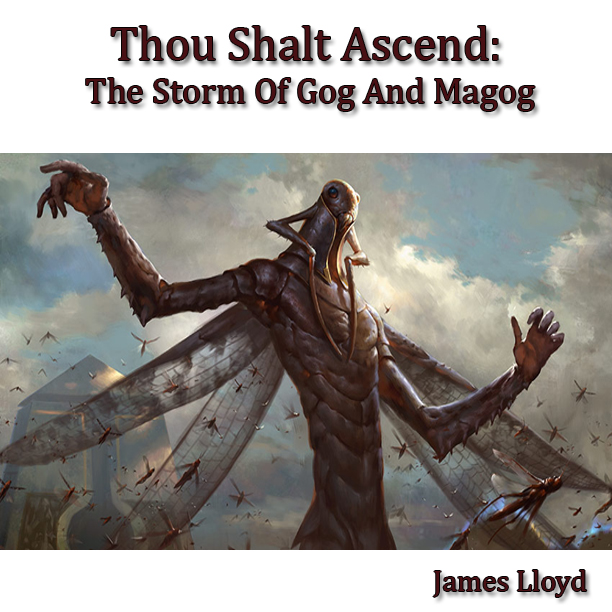
Thou Shalt Ascend:
The Storm Of Gog and Magog
Thou Shalt Ascend details the amazing reality of how the devils came to battle JESUS CHRIST at the entrance of the kingdom of God. In the new Christian Media DVD, Thou Shalt Ascend: The Storm Of Gog and Magog, James Lloyd shows how the fabled Gog and Magog Prophecies show a deeper Spiritual layer of the military conflict at the end of the age, as they actually describe the war in heaven (Revelation 12:7), when the dragon (and his Angelic Rebel Coalition) is cast out of heaven.
Details Here!

The 5th Dynasty
Related to the concept of Twin Timelines in which sequential episodes occur more than once in Scripture and History, this DVD looks at the rebellions against Moses in the Wilderness. Recognizing the failed revolt in Numbers 16, in which Korah and his followers died trying to overthrow Moses, the same thing occurred in 1649 AD as a parallel Christian rebellion tried to seize the throne of England for Christ. Known as the 5th Monarchy, James Lloyd connects this historical event with the 5th Dynasty of Israel, led by Jehu in I Kings 19:16.
Details Here!
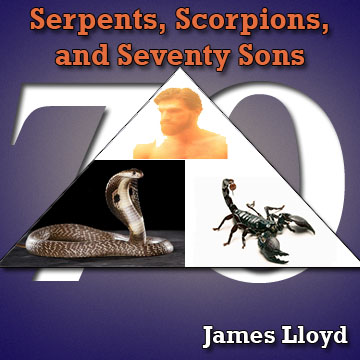
Serpents, Scorpions, And Seventy Sons
Another new DVD from James Lloyd, Serpents, Scorpions, and Seventy Sons is 2 hours of dynamite video, derived from the TV program The Apocalypse Chronicles. Using the Scriptural record, James shows how the number 70 was related to the LORD's election of Israel, as
His mediator to the Gentiles. The number is based on the presence of the children of Israel in Egypt, and this study shows how it symbolizes God's redemptive process, as Israel was chosen as "a light to the Gentiles"
(Isaiah 49:6).
Details Here!

The Saga Of Esau
Distilling Esau's behavioural patterns down to two themes related to how he despised the will of the LORD, and assigned blame to innocents whom he purposed to kill, James shows how The Saga of Esau is echoed in the Edomites, King Herod, the religious council of the Jewish leadership which rejected Christ, and even Antichrist and the False Prophet.
Details Here!
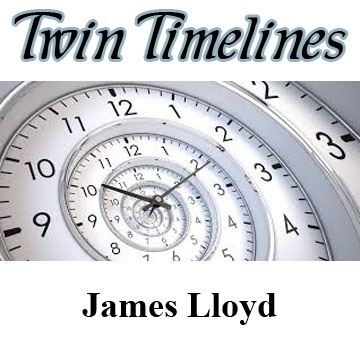
Twin Timelines DVD
Tying the various events of the presidential campaign (and the first 9 months of the Trump presidency) to what we call the Prophetic Parallels, this amazing new DVD features James detailing the entire cycle of the Twin Timelines – including predictions of where we go from here.
Details Here!
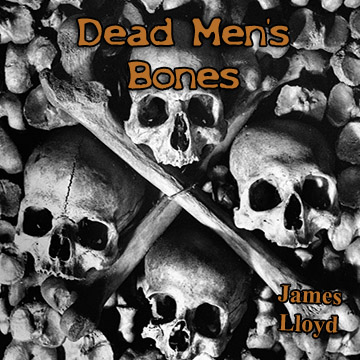
Dead Men's Bones DVD
A 2 hour DVD in which James Lloyd refutes the false doctrine of the Divine Council Paradigm. Spreading like wildfire, prophecy teachers are claiming God turned over the Gentiles (at the Tower of Babel) to a "council" of angels and the false "gods" of the Gentiles. The heresy is based on heathen manuscripts praising Baal and, incredibly, many Christian scholars are claiming certain Old Testament verses were derived from writings dedicated to Baal!
Details Here!
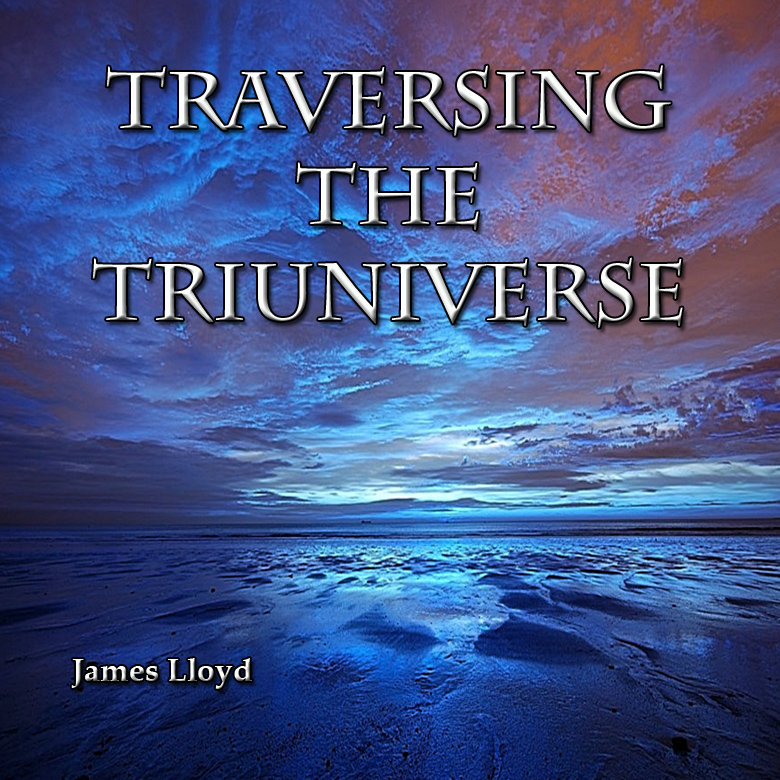
Traversing The Triuniverse
Traversing The Triuniverse is a unique new studio audio narrative from James Lloyd. Based on the article of the same name, James reviews the twin timelines concept, which has been previously examined, wherein the New Testament events parallel the Old Testament sequences. Now, in Traversing The Triuniverse, he takes the prophetic parallels a step further, showing how the Spiritual fulfillment is the substance, but the physical timeline, inhabited by the Spirit of Antichrist, which is the shadow, takes the same sequence, and reverses the roles.
Video Here!
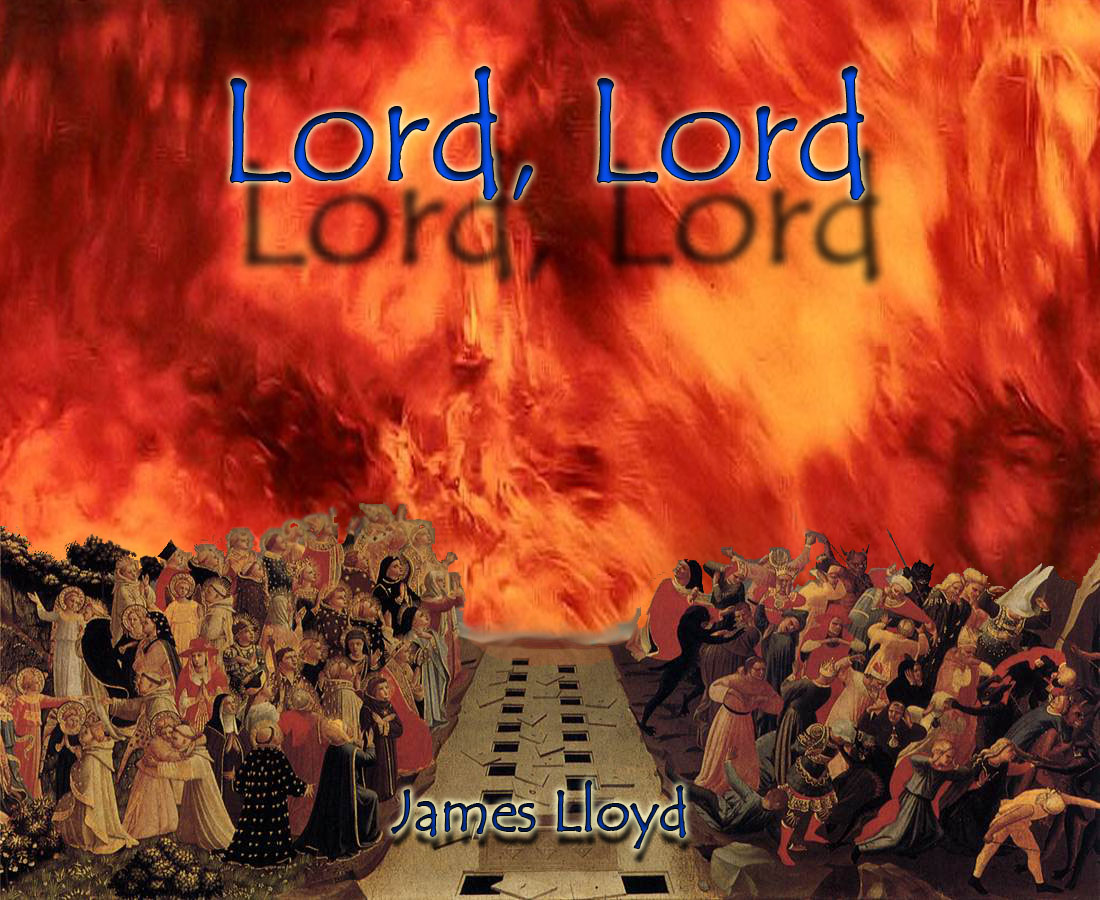
Lord, Lord
Those famous words, familiar to Christians reading the New Testament, are spoken at the time of judgment, when the Bible says MANY will be turned away. Most believers are also aware of the ominous response in which Christ tells this "many" to depart from Him, as He never knew them.
Details Here!
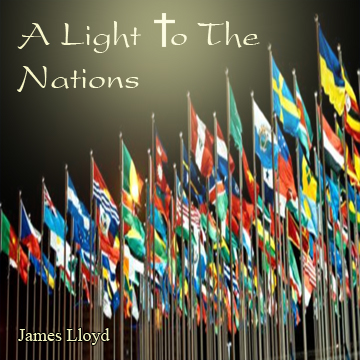
A Light To The Nations - Book
This book includes the astonishing prophetic metaphor where Jonah, symbolizing Old Covenant Israel, resists the call to prophesy to the Gentiles, and sails to Europe to escape the LORD's will. Swallowed up in symbolic Death – and then deposited back onto the land, where the Christ rejecting state re-emerges in 1948 as an involuntary witness, Jonah is an important figure in prophecy. Meanwhile, true Spiritual Israel is seen passing through the sea, walking in the will of the LORD, at the Exodus, even as the earthdwellers (the Egyptian host in the text) are destroyed.
Details Here!

The Rise And Fall Of The Romerican Empire - Book
In this amazing book, James brings together all the components of prophecy, including the Prophetic Parallels, the 6, 7, 8 Cycle, the Beast That Was sequence, the Little Horn, and the Twin Timelines of Bible Prophecy. Integrating these modularized phenomena into a seamless whole, The Rise and Fall Of The Romerican Empire deciphers Bible Prophecy in an unprecedented fashion.
The identity of Antichrist is again revealed in this work, as well as clearly showing where we are now in the prophesied sequence of events. His largest book in 20 years, the Rise and Fall Of The Romerican Empire is the definitive work which systematically presents the truth of Remnant theology.
Details Here!

The Collective - Book
This book details how the Spiritual entity is essentially the opposite of the body of Christ. Symbolically articulated in the book of Revelation as the Image of the Beast, the Spiritual formation could also be described as the body of Antichrist. This polarity places the body of Christ on one end of the Spiritual spectrum, and the body of Antichrist on the other.
Details Here!

The Culting Of Christianity - Book
The Culting Of Christianity links Egyptian mysticism to leaders in the early church, as well as Jewish opponents of Christianity.
An incendiary breakthrough, James conclusively shows the idea of a pre-tribulational evacuation was written in religious documents before Jesus was born. And it doesn't stop there, as James tracks how Occultic writings influenced the development of early Christian doctrine.
Details Here!
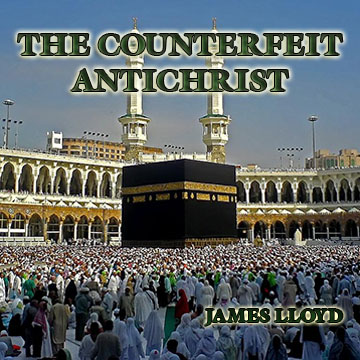
The Counterfeit Antichrist
The first new DVD from James Lloyd in several years, this 2 hour TV program examines the rapidly growing idea the appearance of "the" Antichrist will be tied to the prophesied Moslem saviour figure known as The Mahdi.
Many Christian preachers and prophecy authors are now embracing a variation on the ancient "revived Roman Empire" lie with a scenario in which the end times "Antichrist" arrives as a powerful leader from the Islamic world. Leaning on Islamic prophecy itself, in the process of presenting their case in books, television programs, and speaking engagements, these false prophets are pitching another gospel (II Corinthians 11:4) which fails to recognize the truth about the Spiritual entities – commonly identified as Antichrist and The False Prophet -- found in Revelation.
Video Here!
|
The Christian Media Ministry makes our materials available through gifts made to the ministry. When you help Christian Media, we reciprocate with the materials in which you've indicated an interest. Supporters of our ministry do so because they believe in the message the LORD has given us, and we seek to follow the Spiritual directive which Christ gave to the Apostle Peter, in that we seek to feed His sheep. This constitutes a contract, in that gifts we receive indicate a willingness to be instructed in the things of the LORD, as the supporting gifts we receive from the body of Christ allow us to continue in the mission He has called us to.
Help row the CMN boat
Click on the oar
to donate with Paypal
Online CM Fellowship
For Remnant Believers
To join
send an email to
JamesLloyd@mediachristianman.com
Volunteer Programs
- If you'd like to serve the cause of Christ, we have
Internet volunteer programs in place - just email James Lloyd at
the above address
|

















